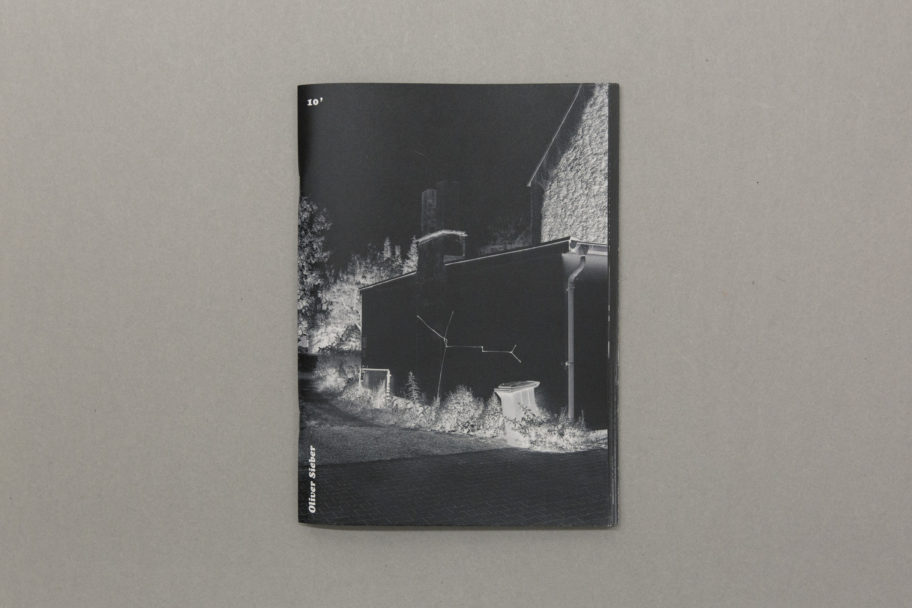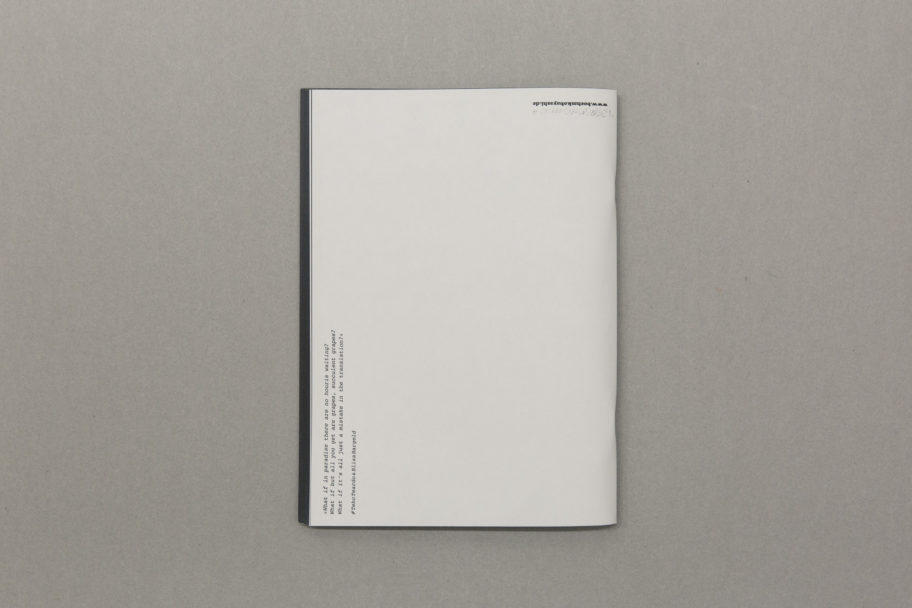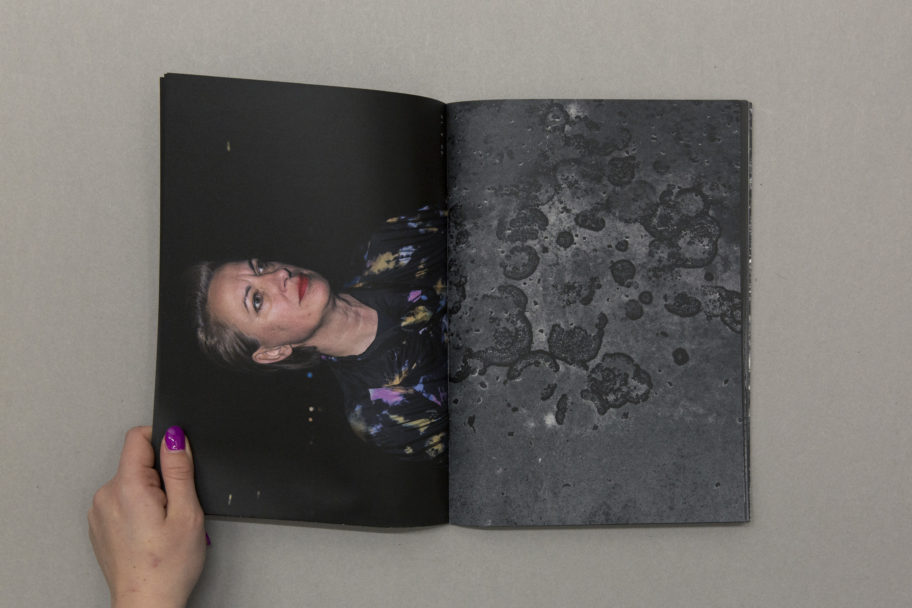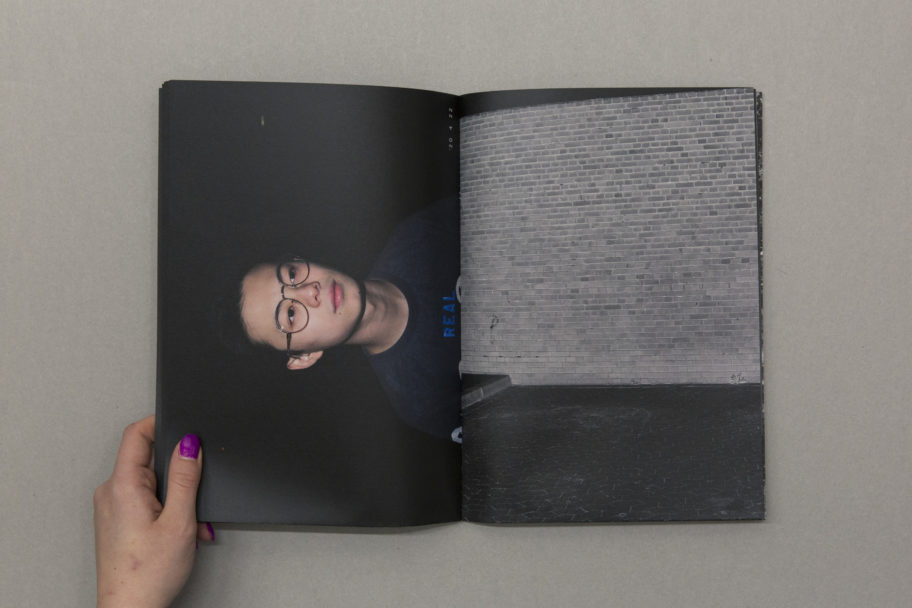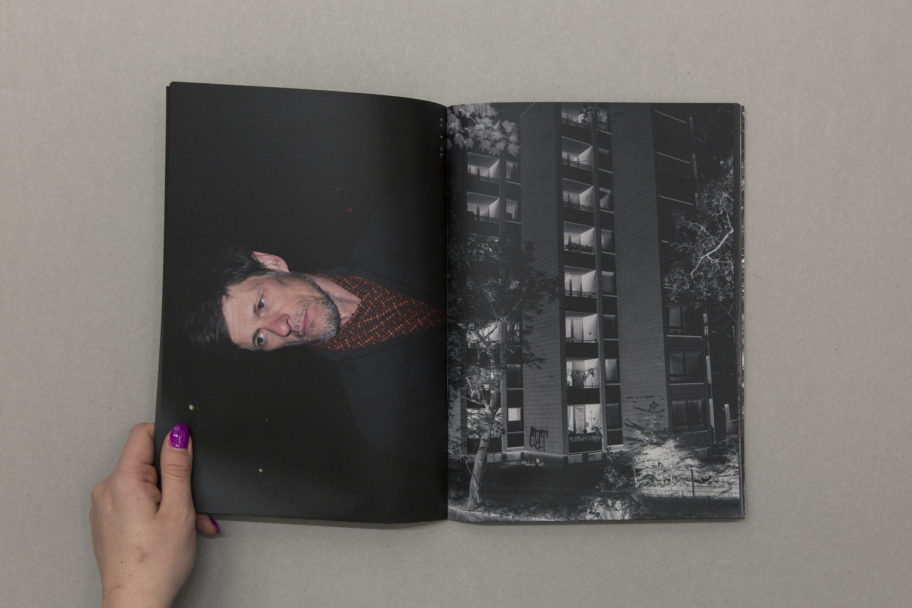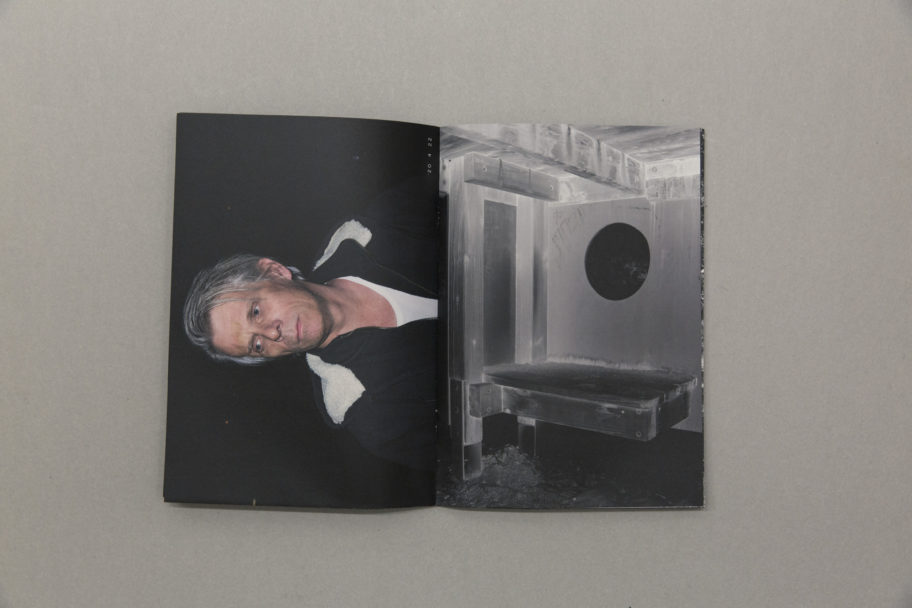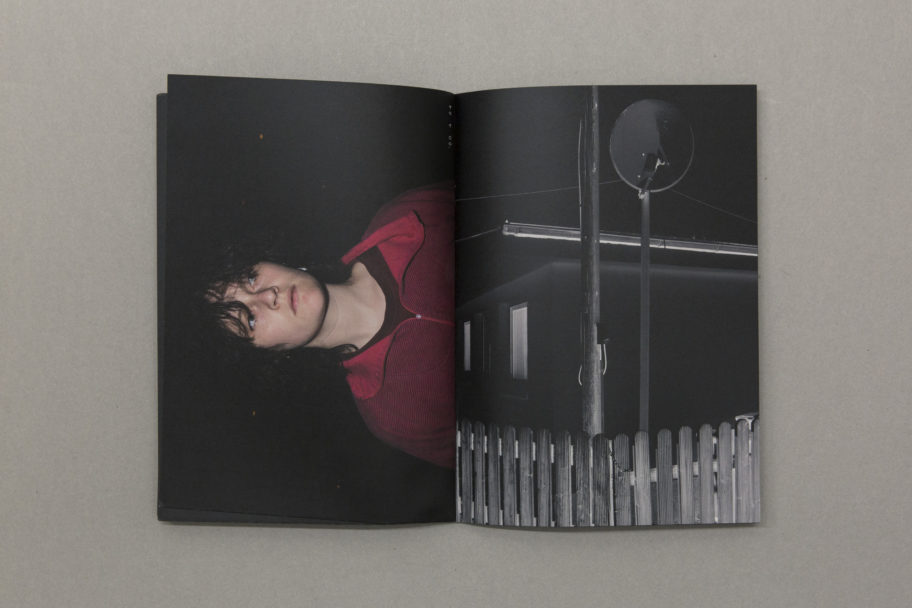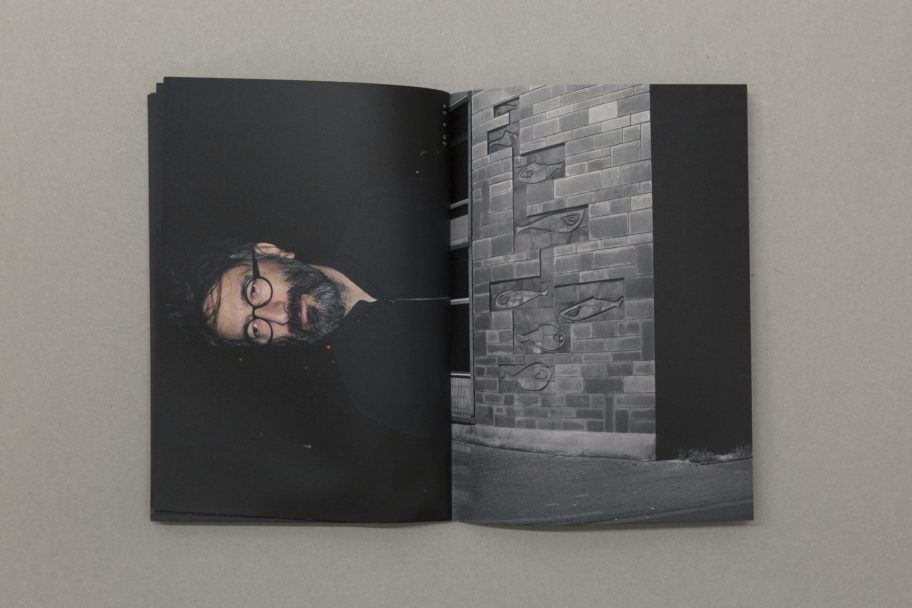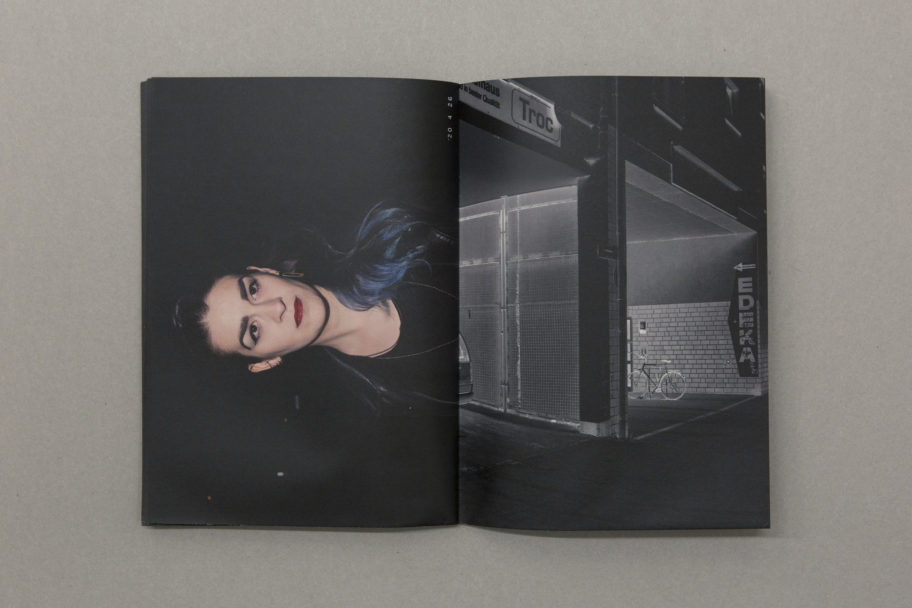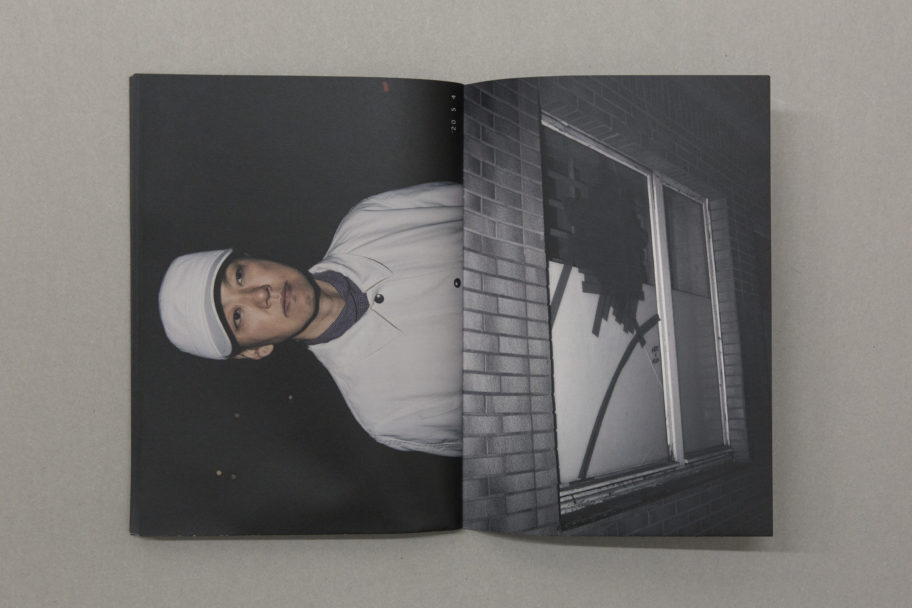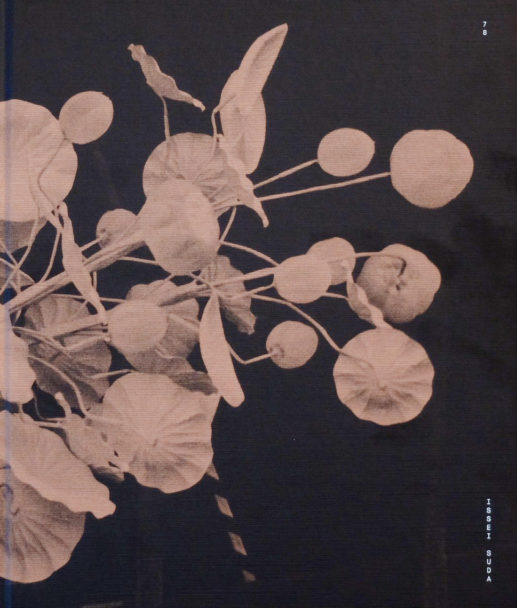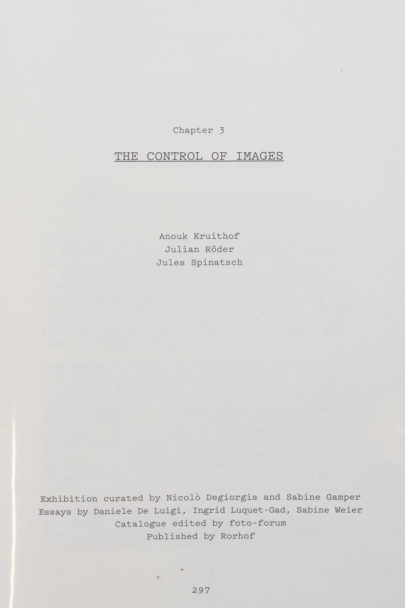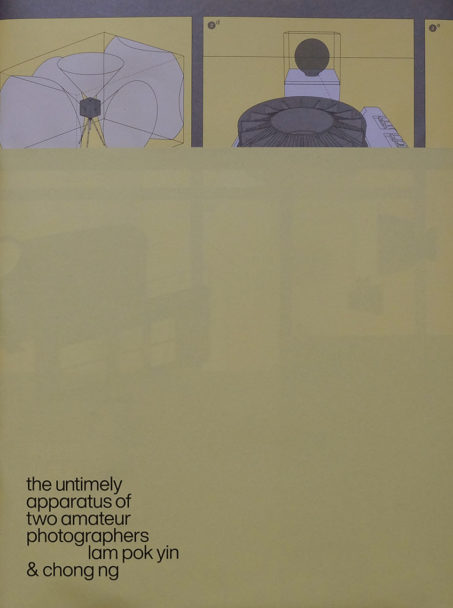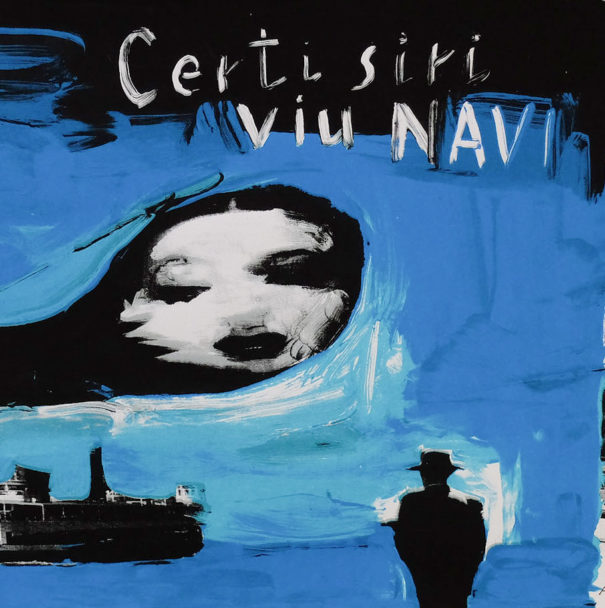
Oliver Sieber, 10′, 2020
40 Euro
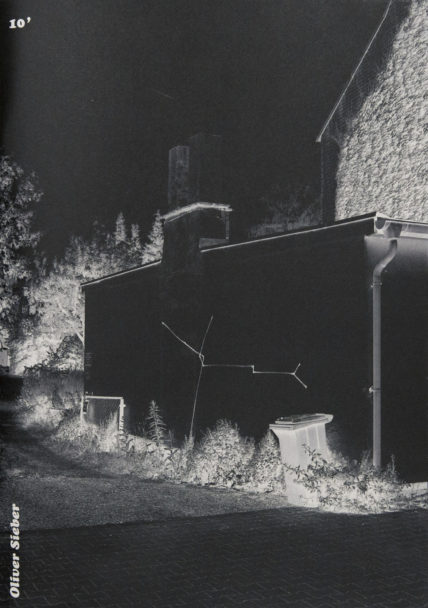
3 in stock
Night is the dark part of the day. Astronomically, night is created by the rotation of the earth. The light boundary we call twilight, the rising and setting of the sun, is a local phenomenon. The onset of darkness and finally the night itself, are clocks for our organisms and a constant stimulus to our imagination. Night is everything at the same time: a daily, unchanging rhythm, a banal change of light conditions, but also a powerful image that is culturally, ritually or aesthetically charged and used (…). The night can be illuminated. But nocturnal light is not an imitation of the day. Artificial illuminations and exposures are part of the night: street lamps, petrol stations and service stations, neon signs and nocturnal shop windows or the glow of a flat are just as much a part of it as the light of headlights, torches or strobe lights. The visualisation of darkness through light is a paradox in every respect, since light displaces and replaces darkness. But in the illuminated resolution there is also an accentuation and contouring of blackness. The physical contrast is all the more a plausible aesthetic means of art. A cone of light in whose glow narrative and projection, myth and enlightenment become visible like swirled dust particles (…). In the age of the black screen of any display, such images of the night also seem nostalgic. Night and darkness in the digital sphere are infinitely more than just an indistinct space. Like a black hole, the dark side of technology inverts and perverts our cultural idea of night (…) The title “10 Minutes” forms the framework for these photographs, which at first glance appear crystal clear, but which at second glance already appear opaque, only to finally dissolve in their directness through the replacement of the positive with a negative. “10 Minutes” is first and foremost a photographic space and not a genre or typical nocturnal motif. Sieber’s work rather marks a distance that manifests itself pictorially between the artist, the figures and the city and a technology whose essence is the photographer’s control of light. But the proportions and coordinates are more ambiguous than one might think. The brightest point is also the darkest. This is also the poetry of light that shines even though it has already passed. But it is above all the dissolution of the dichotomy of day and night that becomes visible in “10 Minutes”. Because actually there is always darkness, we just don’t see it. The paradoxes of light are also aesthetic categories of deception. Just as the technique of “day for night shooting” used in the feature film turns day into night (…). But light conditions also have political and social dimensions. Similar to Paul Graham’s work “American Night”, in which social reality initially disappears through overexposure, only to emerge all the more clearly, Oliver Sieber reverses the seemingly clear and visible premises of his nocturnal motif through a chiaroscuro stylisation and a negative-positive inversion. He illuminates the night but does not dissolve it. The images are a black mirror with all its uncertainties and distortions. The gazes of the sitters run side by side endlessly, as in a parallel projection in geometry. There is no common vanishing point. The day artificially becomes night. But the night in the light of the flash does not become day. The tonal values are reversed, which is enough to make one lose one’s orientation. For the viewer, people and objects stand out very clearly in the glow of the flash. The flashed eye of the sitter, however, sees nothing for a short time. The bright light becomes darkness for them.
Oliver Sieber
10′
Böhm/Kobayashi Publishing Project, 2020
20,5 cm x 28 cm
56p
Softcover
English
ISBN 978-3-932187-63-6
